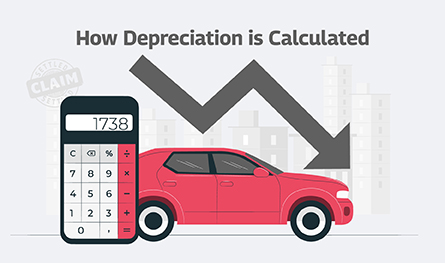Related Articles
 Jan 08, 2025
Jan 08, 2025
Is Varicose Vein surgery covered under the health insurance policy in India
 Health Insurance
Health Insurance
.png)
When it comes to reading a health insurance glossary fully, it is quite likely for a layperson to not be able to comprehend it – sometimes completely or even not at all! This blog aims at familiarizing you with the basic jargon used in nearly all health insurance plans to help you make informed decisions each time you go over them.
.png)
Your health insurance policy is your eternal guide to health security for your future as well as that of your family. It therefore becomes vital for you to read it at least once thoroughly so that you know what it exactly contains and how it is useful for you.
However, since most people like you and me are not generally aware about the technical jargon used in health insurance plans, it becomes difficult to fully comprehend the document. Note that it is not really necessary to be able to understand the meaning of each and every term specified in your insurance policy. However, it always helps to know what those words stand for or imply so that you can stay informed.
This is why we enlist in this blog a glossary of the most commonly used terminologies in a health insurance policy. These are also arranged from A-Z for your convenience. Keep reading to know what each of them means.
A very commonly used term in almost all health insurance policies, add-on cover refers to an additional feature that is optional for the policyholder to choose/buy separately with the basic plan. It offers extra coverage over and above the one provided in the base plan and hence needs to be bought at an additional payment.
This refers to the nominee selected by the policyholder who would be entitled to receive monetary benefits on behalf of the latter, in case he/she passes away during the term of the plan.
Additional coverage provided in your plan for severe health conditions such as cancer, strokes, heart attacks, and the like. Insurance can be bought to cover medical expenses incurred on the treatment of serious illnesses of this order.
This means that the policyholder is unable to receive treatment at the hospital and can therefore avail medical treatment from their home under professional guidance from medical staff.
These indicate the various health conditions or ailments not covered under your health insurance plan. It is very important to read all the exclusions mentioned in your policy document before proceeding with its purchase to avoid any confusion later at the time of making an insurance claim.
This is a small service provided by the insurer to the insured, allowing them to cancel the health insurance plan bought without the imposition of a penalty, Note that it is generally a limited period (no-penalty period), maybe lasting up to 15 days.
This is a type of health insurance plan that can be bought for a group of people together. This is generally done in case of a set of employees working for the same company. The employer incurs the premium for the plan and offers its benefits to the employees in return for their service to the company.
This refers to staying in the hospital upon admission for a minimum of 24 hours. It can apply both in case of planned stay for treatment or unexpected admission in case of emergency.
It is a common acronym used for the Insurance Regulatory and Development Authority of India. It is the highest body in the insurance industry that governs and regulates the working of all insurance companies.
Lapse is when the coverage provided by the insurer under a specific health insurance policy has either expired upon expiry of policy term, or been terminated by the insurance company due to failure in premium payment on part of the insured.
This is provided to the insured to cover all costs incurred during the birth of a child. Both normal and C-Section deliveries are covered under maternity insurance along with expenses involved in pre- and post-natal care as well.
Your insurer would provide you with a list of network hospitals at the time of policy purchase which includes the names of the hospitals that have a tie-up with the insurance company. These hospitals offer the benefit of cashless hospitalization (treatment without spending any money to the hospital) to the insured since they are empaneled with the insurer.
OPD is a common abbreviated form for Out Patient Department and you would find the term OPD treatment mentioned in your health insurance policy document often. It simply refers to the treatment availed at a nearby clinic or hospital without the need for getting admitted at the facility.
This refers to any health condition or disease that the policyholder may have had at the time of buying the insurance plan. Ideally, the insurance company must be informed of it before proceeding with purchasing insurance.
This is an exclusive benefit offered to the insured wherein the insurance company agrees to refill or recharge the amount of sum insured to the policyholder in case the sum is used up or exhausted. This may happen at the time of availing a major treatment for a serious health condition that involves huge expenditure. Upon exhaustion of the sum insured in this case, the insurer may refill that amount to be used the next time for another treatment for the insured.
There are some health insurance policies specifically designed for the elderly population of the country. The Senior Citizen Plan ideally covers people aged between 60 and 70 years. Some of the healthcare benefits covered under the plan include AYUSH coverage (for alternative treatments like Ayurveda, homeopathy, naturopathy, and the like), cost coverage for psychiatric treatment, and cover for domiciliary care.
These are plans that can be purchased over and above the standard health insurance plan. The top-up cover helps cover the healthcare costs upon exhaustion of the sum insured amount covered under the standard policy.
This refers to the time period that the policyholder needs to wait before raising a claim with the insurer. The only exception is made in the case of an accident wherein no waiting period rule applies. This period is generally for 30 days; however, it may be up to 4 years in case the insured has pre-existing diseases.
Deductible: The sum you must pay each year before your insurance policy begins to cover eligible medical costs. Dependent—Anyone who is covered under the primary insured customer's plan, including a spouse or child. A list of prescription drugs that are covered by your insurance plan's drug formulary.
For various coverage kinds (health, dental, vision, pharmacy, etc.), health insurance products include individual plans, family plans, group plans (for employers), and government-sponsored choices (Medicare, Medicaid).
If you have a job, your employer most likely pays for your health insurance. If you work for yourself, you can directly purchase insurance from a private insurer.
Young and healthy? Find out which of these plans rewards you with lower premiums. Click here to check now!

Paybima Team
Paybima is an Indian insurance aggregator on a mission to make insurance simple for people. Paybima is the Digital arm of the already established and trusted Mahindra Insurance Brokers Ltd., a reputed name in the insurance broking industry with 21 years of experience. Paybima promises you the easy-to-access online platform to buy insurance policies, and also extend their unrelented assistance with all your policy related queries and services.

.jpg)
Having a bike is not just about convenience, it’s a huge responsibility. Financial protection of your two-wheeler is important and the best way to ensure that is to have a bike insurance policy that will protect you in case of an accident, theft or a natural calamity. There are so many options when it comes to policies, making it difficult to know what’s best. This guide makes it easier to choose the best bike insurance policy that is suitable for you.


Non-linked, non-participating term plans are the ones that do not participate in the business and profit of the insurance company. These are fixed premium plans where the policyholder pays a fixed amount to ascertain a guaranteed sum as a return to be paid to the nominee in case of his/ her demise. Let’s learn more in this post.


Car depreciation implies the difference between the cost of a car at the time of buying the car and when you sell it. A car insurance claim amount is determined by the car depreciation rate. The car depreciation rate is the reduction in the value of your car over its lifespan caused by wear and tear.


Have you ever caught yourself lost in illusions about your daughter's future events, such as her university convocation and first day at work? Her university convocation. When she embarks upon her initial job after graduation will be the day.

.png)
Accidents can happen anywhere, anytime, by your own fault or another person. What’s important is to be prepared for such mishaps. This is where Own Damage Car Insurance comes in handy.
